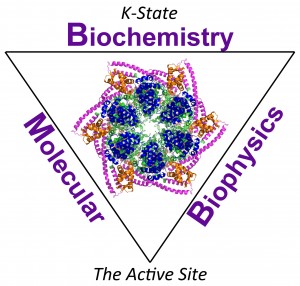 The Department underwent some changes this fall. First and foremost, we welcomed our new Department Head, Phillip E. Klebba, who joined us from Oklahoma. We also began a faculty search and revamped our undergraduate curriculum. Most public change: our new name.
The Department underwent some changes this fall. First and foremost, we welcomed our new Department Head, Phillip E. Klebba, who joined us from Oklahoma. We also began a faculty search and revamped our undergraduate curriculum. Most public change: our new name.
Many professors in the department have diverged into biophysical science in their research. Grad Chair Michal Zolkiewski noted that while the name is new, the research is not. Zolkiewski, a biophysicist himself, described the discipline as “using physical principles to understand how different molecules participate in life processes.” When added to biochemistry, this offers a more complete view of these processes. Zolkiewski continued, “Biophysics brings new approaches that aren’t available in more traditional biochemistry, it will open opportunities for new collaborations and projects, and potentially some new funding.” Continue reading “What’s in a Name?”
